The Importance of Content Marketing in Building Brand Authority
In every industry, competition is fierce, attention spans are shrinking, and establishing brand authority has become essential for businesses. One of the most effective strategies to achieve this is through content marketing.
Consistent creation of valuable and relevant content builds brand authority, fosters trust, and drives business success. In this blog, we will explore the importance of content marketing in building brand authority and how it can benefit businesses in the long run. Here’s what you need to know.
What is Content Marketing?
Content marketing allows businesses to showcase their knowledge in the industry. Companies can position themselves as leaders and go-to sources of valuable information by creating informative and educational content, such as blog posts, social media posts, and newsletters. Content marketing is not explicitly promoting a brand but aims to stimulate interest in its products or services. This helps build credibility and trust among the target audience.
Brand Authority and Why It Matters
Brand authority refers to the level of trust, credibility, and experience that a brand has established in the eyes of its target audience and industry. It represents the brand’s position as a recognized leader, knowledgeable source, and reliable provider of products or services within its niche.
Brand authority matters for several reasons:
- Trust and Credibility: Brand authority builds trust among consumers. When a brand is perceived as an authority in its field, customers feel confident in its offerings and are likelier to choose its products or services over competitors. Trust and credibility are crucial for building long-term customer relationships and fostering loyalty.
- Competitive Advantage: Brand authority sets a business apart in a crowded marketplace. When a brand is seen as an industry leader, it gains a competitive edge. Customers are more likely to choose a brand with established authority over others needing a solid reputation.
- Increased Customer Loyalty: Brand authority helps in cultivating customer loyalty. When customers trust a brand’s knowledge and rely on its products or services, they are likelier to become loyal advocates who make repeat purchases and recommend the brand to others. Loyal customers can become brand ambassadors and contribute to long-term business growth.
- Pricing Power: Brands with strong authority can command premium pricing. When customers perceive a brand as the go-to source in its niche, they are often willing to pay a premium for its products or services. Brand authority reduces price sensitivity and allows businesses to maintain healthy profit margins.
The Synergy Between Content Marketing and Brand Authority
Content marketing helps build brand authority by establishing its experience, fostering trust, engaging the audience, and amplifying its reach. Simultaneously, brand authority enhances the effectiveness of content marketing by attracting a larger audience, strengthening relationships, and reinforcing brand identity. They create a powerful combination that elevates a brand’s reputation, fosters customer loyalty, and drives long-term business growth.
The Cornerstones of Content Marketing
The cornerstones of content marketing form the foundation for a successful content strategy. These fundamental elements are essential for creating and executing effective content marketing campaigns. Let’s explore the four cornerstones of content marketing.
- Strategy and Planning
The first cornerstone of content marketing is well-defined strategy and planning. It involves setting clear goals and objectives for the content marketing efforts. Digital marketers can contribute to creating a solid plan that helps guide content creation, distribution, and promotion, ensuring that it aligns with the brand’s overall marketing objectives and resonates with the target audience.
- Audience Relevance and Value
Creating relevant and valuable content for the target audience is crucial. The second cornerstone of content marketing focuses on understanding the audience’s needs, pain points, and interests. Content should address these needs by providing solutions or entertainment. By offering valuable information and fulfilling their desires, brands can establish themselves as trusted resources and build strong connections with their audience.
- Quality and Consistency
The third cornerstone emphasizes consistently producing high-quality content. Quality content is well-researched, visually appealing, and aligned with the brand’s voice and style. It should provide value and be informative and easily digestible. Consistency is also vital to maintain audience engagement and building trust. Regularly publishing content, whether blog posts or social media updates, helps establish a reliable and predictable presence.
- Distribution and Promotion
Creating great content is only half the battle. The fourth cornerstone revolves around the distribution and promotion of the content. It involves identifying the most effective channels and platforms to reach the target audience—like the brand’s website, social media, or email marketing. Content marketing generates over three times as many leads as outbound marketing and costs 62% less. Effective distribution strategies ensure the content comes to the right people at the right time, maximizing its visibility and engagement potential.
Additionally, promoting the content through SEO optimization, paid advertising, social media sharing, and email campaigns helps increase its reach and impact. Distribution and promotion play a vital role in amplifying the brand’s message, attracting new audiences, and driving traffic to the brand’s owned platforms.
How Onimod Global Can Help
Onimod Global can play a crucial role in helping businesses with their content marketing efforts. By leveraging the services of our digital marketing agency, you can benefit from a comprehensive and strategic approach to content marketing success. Onimod Global can save time, input our experts’ knowledge, and achieve better brand visibility, audience engagement, and overall marketing objectives.
Final Thoughts
Content marketing is pivotal in building brand authority in today’s competitive landscape. By consistently creating valuable and relevant content, businesses can position themselves as leaders, establish trust, and ultimately drive success.
Contact Onimod Global today for more information on building brand authority with content marketing.

